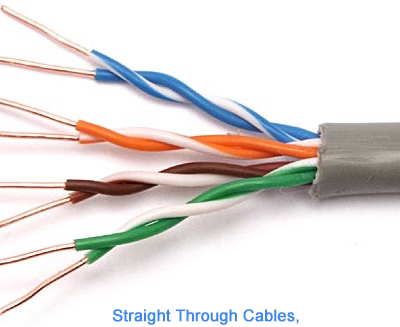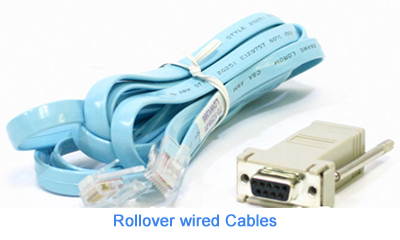Ethernet Cabling
Ethernet Cabling
Ethernet Cabling has become a part and parcel of the networking field and communication. Ethernet cables are used for connecting devices on LANs [Local Area Network] such as switches, routers and PCs etc. Ethernet cabling is carried out via different cables as per the particular need and design of the networking structure.
These cables encapsulate three major kinds namely; Straight Through Cable, Cross over Cable and Rolled Cable. The classification of the cables into three types originates from the difference or the way in which they are wired, the manner in which pin-to-pin connection is held.
Straight Through Cables, as the name signifies are used for linking dissimilar devices. Straight Through Cable is used for connecting a LAN port to a computer, hub or switch. It is an 8 wired patch cable. It is also used when connecting a PC to a switch and also for connecting router to a hub, or a printer to the router etc. Its main purpose is to connect a host to the client.
However a computer would not be able to get connected to a router via Straight Through Cables because both of them are considered to be the “same” devices. These cables can be termed as the standard ones as per the percentage of their usage in various networking setups. If we consider two connectors such as A and B, both having 8 end of wires originating from one connector and ending at the other. In such a layout, straight through cables will initiate from Pin 1 of Connector A and would go to the same Pin 1 of Connector B. Models like RJ connectors are mainly used for such cable design.
Crossover Cables are planted to connect two hosts together. The cables are crossed wired to let the two computers or hosts get connected directly. It can also be said that primarily Crossover Cables are used when like or same devices are intended to be connected. The pairs of wires crisscross each other which makes the communication path for the two devices to communicate at the same time.
Crossover Cables are extensively used for connecting a computer with a computer, switch with a switch, and router with a router, hub with a hub and computer with a router. They overturn the receiving and transmission signals. RJ-45 connectors make the reversed color-coded wires visible. These wires are used for building direct networking connections. Exceptions may be there in certain devices when it using and setting up the connection through Crossover Cables. Also the updating technology has made devices with integrated auto sensing technology which helps them to build the crosses pairs when required.
Rollover wired Cables connects any device or a computer terminal to a network switch console port. The cables connected in a rolling manner are not responsible for the connectivity of the network or transmitting data rather they only establish an interface with the device.
Pin 1 gets connected to Pin 8 in Connector B. Their usage is not extensive and they are normally available in different colors from the Crossover and Straight Through Cables.
Read more:
- What skills you need to pass CCNA exam
- The Cisco Three Layer Hierarchy Model
- Ethernet Networking
- Data Encapsulation
- OSI Layer Model
- Network Devices
- Network Topology
- Networking Essentials
- Computer Networking



